#mechanism design
Text
It's weird that the airline ticket market only has "asks" and not "bids".
Why isn't there a site where I can bindingly offer "I'll buy a round-trip ticket from Seattle for a week in the Bahamas for $250 any time January-October at least 2 months in the future", and where airlines then schedule flights based in part on the seat sales they can make to standing offers?
11 notes
·
View notes
Text
Design of Injection Mold for Stabilizing Bracket of Mobile Intelligent Terminal
1 Support structure and process analysis
Bracket structure is shown in Figure 1, shape is “Y” shape, main body is a cylindrical rod, center of cylindrical rod is a tapered round hole, top of round hole has an internal thread hole, and thread is a pipe thread. The lower end of cylindrical rod is two branches, which are symmetrically arranged in a mirror image, and an undercut hole with a depth of…
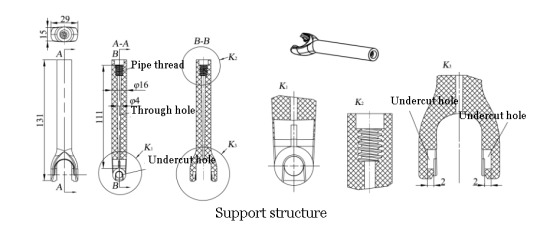
View On WordPress
#core-pulling mechanism#demoulding mechanism#Design of Injection Mold#gating system#mechanism design#mold design#mold structure#molded plastic parts#multi-plate mold#plastic parts#Support structure and process analysis#three-plate mold#three-plate mold structure
0 notes
Text
Revolutionizing Mechanism Design: IDS Lab's Pioneering Insights
Dive into the cutting-edge world of Mechanism Design with the Information and Decision Science Laboratory. Explore groundbreaking research and innovative solutions shaping the future of cyber-physical systems. Join us in unraveling complexities, fostering diversity, and advancing technology at IDS Lab – Your Gateway to Mechanism Design Excellence.
1 note
·
View note
Text
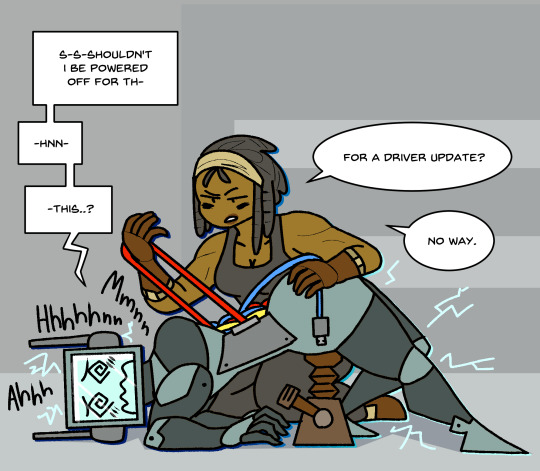
wait did i ever post this piece here? i have a feeling some of my followers may enjoy this.
fun fact: i drew this only a month or so before reading through Spare Parts. call it destiny i suppose
5K notes
·
View notes
Text
Gourmand why are you like this. How can you make living things out of the blue fruit you ate 3 minutes ago. How do you make a living breathing fucking snail? You can't even eat it, and yet you can spit it out, how the hell does that work? Put that thing back!!! Why is it alive??
And how can you make a goddamn neuron from an overseer and. What was this.... Hold on
AND KARMA FLOWER. And how can you make an overseer from neuron+ANYTHING!!!!! FROM ANYTHING!!!!!!! WHAT IS WRONG WITH YOU!!!!
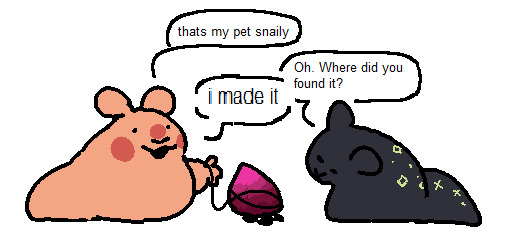



#/lh#does anyone have any headcanons on how gourmand can do this? how they can make octopuses noodleflies and so on?#because i have a very difficult time explaining this#i know its just a gameplay mechanic and you dont need to overthink it but i dont care#rw#akso the grey scug is nightcat but i still havent really thought about their design yet so i just gave them green stars. thatll do#pmpwbrrs#rain world#okay ill put th main tags#rw gourmand#rw nightcat#emetophobia#emetophobia tw
3K notes
·
View notes
Text

coloured this one :)
(she/they for character)
#my art#artists on tumblr#character design#illustration#original character#lampriformity#oc: azura#my darling gfs oc.#mechanic#sorry shes taken her full time job is being the boyfriend to her car robot gf#oc#queer art
1K notes
·
View notes
Text
WHO GAVE THEM MECHS
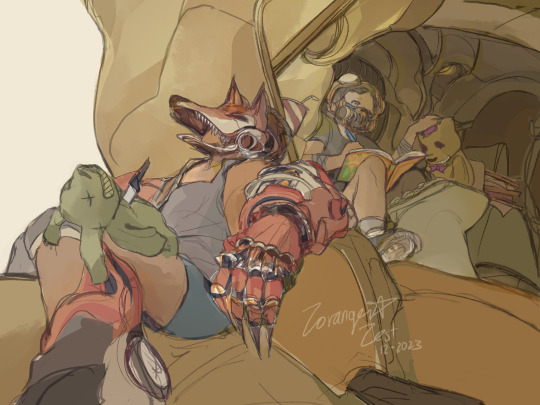
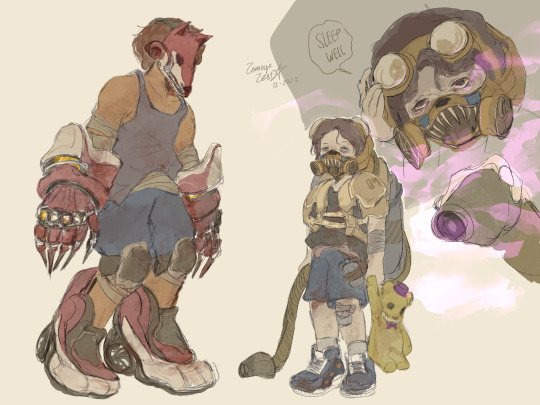
#five nights at freddy's#fnaf#fanart#evan afton#michael afton#crying child#fivenightsatfreddysfanart#drew some mechanical nonsense to heal the soul#evan’s gas mask is my favourite thing ive designed in a while#WOOOOOOOOOOOO MECHS
2K notes
·
View notes
Text


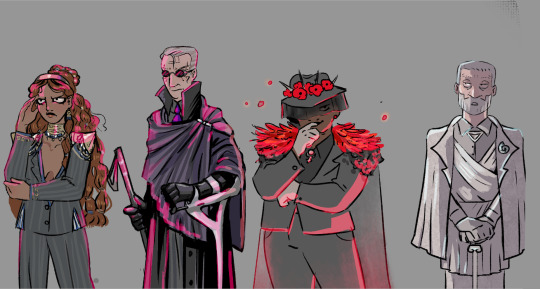
Ulysses And The No-Good, Very Bad Day 30 Years
The Mechanisms albums are so much fun to make character designs for!
Design details pointed out under the cut
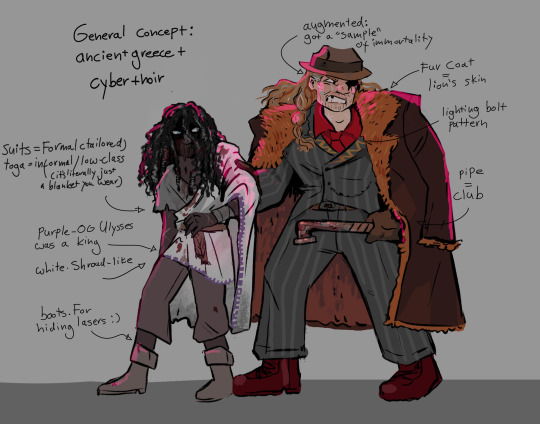
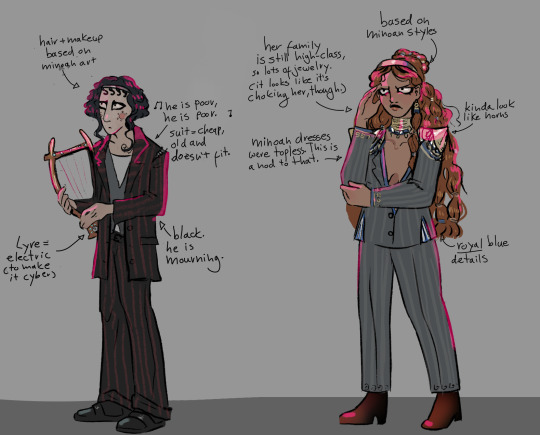

#the mechanisms#the mechs#udad#ulysses dies at dawn#artists on tumblr#digital#sfw#lineup#character design#tumblr formatting will be the death of me istg
2K notes
·
View notes
Text
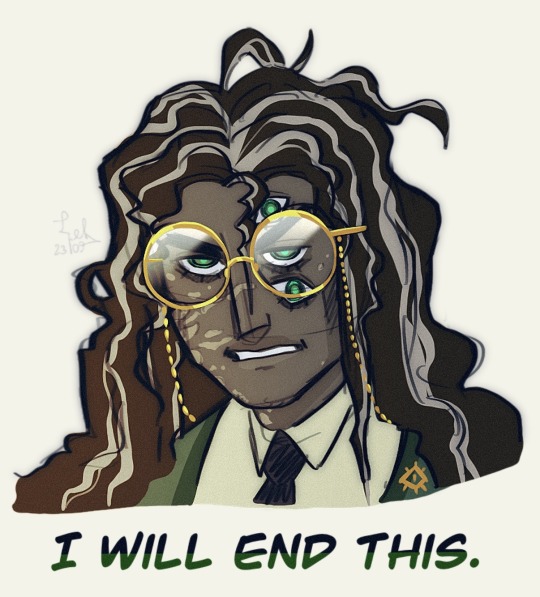

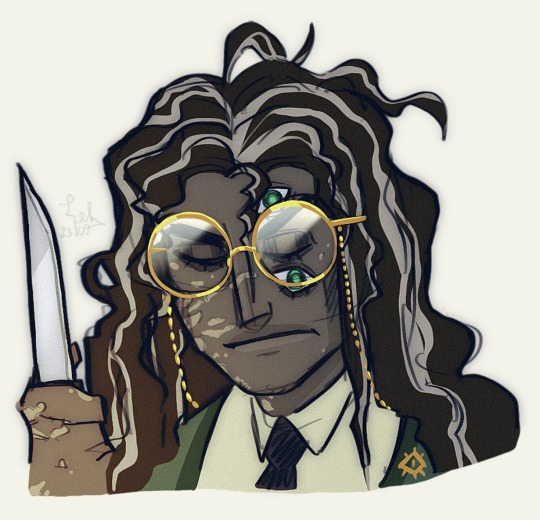

It was not according to plan.
#TMA#the Magnus archives#the magnus archives spoilers#jonmartin#jonathan sims#martin blackwood#tma memes#tma shitpost#my art#mag 200#i fixed you their designs at last#i am still in shambles over mag 20p#*200#this is my coping mechanism
2K notes
·
View notes
Text

Part of the Gunpowder Tim vs. the Moonkaiser project I'm working on. I still have a hard time figuring out what kinds of weapons to include, but nerf guns as reference help.
#poster design#digital art#gunpowder tim#gunpowder tim vs the moon kaiser#the mechs fanart#the mechanisms#the mechs#artists on tumblr
911 notes
·
View notes
Text
Retrospective: D&D 3e class feature advancement and design
Of the editions of D&D that I've played, I think Third Edition is my favorite. It's imbalanced, sure, but part of what differentiates D&D from videogames is that there's a DM on hand to say "let's change that". Much of the general success of 3rd was probably due to the Open Gaming License that you may recall a recent fuss about, and two specific impacts of the OGL were 1) explosion of fan content to add on and change stuff, 2) fanmade polish of the System Reference Document (SRD), such as this hyperlinked and crosslinked version where just about everything is accessible in one click. Much less searching for rules!
I also personally liked it for the unusual way it tried hard to put player characters and monsters in the same mechanical framework using the same scale, unlike far too many games, video or tabletop, where the PC has 138 HP but does 9999 damage. (This was to some extent present in earlier editions, but 2e's Monstrous Manual fails to give a creature's Strength score, only specifying its damage directly.) D&D in general was unusually fair and honest about letting you loot Lord Mega-Evil's Mega-Sword instead of doing "2% drop chance" shenanigans. 3e went a step further to making the bugbear playable out of the box, if you wanted to play a bugbear. Bugbears were now real creatures in a sense, not simply bags of HP you popped for XP.
If you're waiting for me to get to the subject announced in the title, just keep waiting, this is a twenty year old game and I'm a grognard with a pet topic. ;-)
4th edition decided to strip much of this stuff back out again, and I detested it. 4e was super weird. 5e tentatively tried to be the simplified best bits of 1e and 3e (IMO) which is nice for the newbies, but I feel its class system still leaves much to be desired. The whole notion of "classes" in a RPG is a bit of a necessary evil. It doesn't exist in-universe, it's an abstraction because doing full pointbuy is more tiresome for players and far easier to accidentally break the system by neglecting one stat or pushing another too high. At the same time, you don't want to lock characters into a progression at level 1, so designers tend to re-invent various class options and class choices that veer back towards pointbuy, and multiclassing...
Bluntly: The "favored class" rules and multiclassing xp penalties in 3rd were failures. The hypothesis was that it would discourage "5 levels of this, 1 of this, remaining levels of this" cherry-picking and encourage keeping 2-3 classes balanced, with an exception for the favored class. What it actually encouraged was "5 levels of this, 1 level of this prestige class, remaining levels of this prestige class" because prestige classes (PrCs) were exempt. Removing that exemption would have had worse second-order effects because prestige classes had different numbers of levels and conditional advancement permission! A deeper overhaul was needed, but didn't appear. My groups usually ended up ignoring multiclassing xp penalties. Worthless rule, no content, no value. Especially the bit where it's possible to get stuck at -100% XP if you made deliberately bad choices, that's nonsense.
What was also a failure, but less so, and produced the content I want to ramble about today, is how the class system incentivized multiclassing in very different ways for different classes. I'm going to gloss over questions of obscure splatbook availability and optimization level here; if you know enough to have an opinion on them you probably don't need to be reading this.
-
Fighter: Multiclass out or prestige class ASAP. This because Fighters have no class features that scale specifically with Fighter level - feats, BAB and HP can be gotten anywhere, and stack cleanly from different classes. Fighter 4 / Barb 1 / PrestigeClassA 5 / PrestigeClassB 10 is an example outcome of starting from "Fighter" and keeping the concept without being bound to the classname.
Sorcerer: Prestige out, but only to +1 caster level classes. Sorcerers have 1 scaling class feature, "spellcasting", which is advanced as a whole by several prestige classes. Something like Sorc10 / Loremaster 10 is cool, gets you 20th level casting, and more class features.
Druid: Stay pure. Druids have multiple scaling class features, and very few prestige classes advance other than spellcasting.
(I reiterate: this is what the class system incentivized. Not what you 'should' play.)
-
This difference was not a matter of party role, but of class feature wording.
Broadly speaking, there's two kinds of class features in 3rd Edition: those that provide a static ability at a fixed level (for example, Paladins become immune to fear at 3rd level) and those that have a progression scaling with each level (for example, Paladins can Smite Evil to add their level to the damage done).
Fighters got almost entirely static abilities, and those with diminishing returns. Spellcasting was almost entirely scaling.
Paladins were closer to the Druid end of the scale due to Smite Evil and Lay on Hands saying "paladin level" (not caster level, nor character level) when calculating what to scale with. A few prestige classes explicitly advanced these features, but there was no standard framework for advancing them the way the Thaumaturgist prestige class had "+1 level of existing spellcasting class" for any of druids, clerics, wizards or sorcerers.
Theoretically, the Thaumaturgist or Mystic Theurge prestige classes also worked for other spellcasting classes such as Paladin, but this was mostly worthless because paladins were tertiary casters who got slower per-level spellcasting progression. +1 level of spellcasting had lower value for paladins or bards than it did for clerics or wizards. This was aggravated by partial progression classes such as Eldritch Knight, which provided less spellcasting advancement - measured in terms of fewer levels. They got community shorthand like 9/10 or 7/10 casting progression.
An intuitive-seeming fix haunted me for years: PrCs that give partial advancement to full casters should give full advancement to partial casters. Perhaps even more than one-for-one when advancing tertiary casters. But it was hard to spell out in rules.
Instead, WotC printed special case ugly hack PrCs like the Sublime Chord, which was blatantly "The Bard Prestige Class For Bards" that gave faster-than-bard spellcasting progression up to 9th level bard spells. (In the core game, wizards get up to 9th level spells, but bards stop at 6th level.) It worked by specifying in detail a new separate spellcasting progression meant to be used at each level from 11 to 20, after using the regular bard progression from level 1 to 10.
Ironically, this special case could then fit back into the standard framework: take 10 Bard levels, take 1 Sublime Chord prestige level, now Sublime Chord has its own spellcasting progression so it can be advanced by other prestige classes such as Loremaster or Thaumaturgist. Sublime Chord was a prestige class that bards took mostly for the spellcasting, and then they didn't need to stay in that class for the spellcasting, because spellcasting was a standard class feature that could be advanced in other ways.
What a mess.
-
Still, I gotta give Wizards credit for being willing to fuck around and try new stuff to get out of this mess they'd made.
During 3rd edition, some of their later pile-ons to this mess were the Truenaming magic system that worked based on a skill check instead of levels (this was swiftly exploited because Make Single Number Go Up is easy for nerds with a wide variety of options), the Shadowcasting magic system that got to retroactively convert the class levels of a wizard who multiclassed into shadowcaster (I never saw this used in practice), and the Initiating not-a-magic system in the Tome of Battle:
Instead of caster levels you had initiator levels, and instead of casting a spell you initiate a martial maneuver, and the maneuver involved swinging your sword around so expertly that it shot fireballs or healed your friends or added an extra 8d8 damage or froze the enemy's lifeblood with the Five-Shadow Creeping Ice Enervation Strike. It also let you resist poison or block mind control by concentrating really hard on how you are a mall ninja One with the Blade.

(image: a Blade Magic user who has convinced the DM that hitting people with your bare hands counts as a 'blade' if you call it Knife-Hand Strike.)
It was actually pretty good, once you got past the flowery names, the weeaboo aesthetic shift, the increased complexity, the dissociated mechanics, and the fact that Wizards printed three initiator subsystem classes that were different enough to be annoying. Now that I'm done damning it with faint praise: you calculate multiclass initiator level by taking your main initiator class's class level and adding half the levels in other classes, whether or not they are initiator classes. A Swordsage 6/Fighter 6 character counts as Swordsage 9 for purposes of the Swordsage's primary class feature: initiator level and martial maneuvers.
This sort of worked to encourage a moderate amount of multiclassing on occasion by reducing the cost, but not really, because of nonlinear scaling. The low-level Swordsage abilities are on the order of "Fighter but with 1d6+1 fire damage".
The high-level Swordsage abilities are like "Enemy has to make a Fortitude save or die. On a successful save, enemy still takes 20d6 extra damage on top of your regular damage" and "Quasi-timestop: you get 10 opportunities in a row to pick up a nearby enemy and throw him. Your choice whether you want to throw 10 guys off a cliff, or bounce 1 guy against the wall until he dies."
This class feature progression was cribbed from the core spellcasting system for Sorcerers and Druids, see above for the multiclass incentives on those.
-
I don't have a general solution. Here is my sketch of a fix to the spellcasting part, also usable with the cribbed-from-spellcasting class features like initiator progression:
Build a spellcasting progression separately from a class. Each progression goes up to 9th level spells at character level 20, or the system equivalent. The "Wizard" class then gets a class feature which says something like "+1 spellcasting progression at each level". The "Bard" class gets a class feature which says something like "+0.75 spellcasting progression at each level". The Paladin class get a class feature which says something like "+0.4 spellcasting progression at each level". Round up or down with minima to taste.
This replicates the effect of the 3e progression where the Wizard got up to 9th level spells, the Bard got 6th and the Paladin stopped at merely 4th.
But by separating the spellcasting progression, all these base classes get the same amount of benefit from a Prestige Class which provides +X spellcasting progression per level (X probably 0.5-1). In regular 3e, spellcasting progression classes were worth far more to the wizard than to the paladin, because the paladin got 1/20th of a step towards 4th level spells and the wizard got 1/20th of a step towards 9th level spells.
This eliminates the weird special case that is the Sublime Chord, also eliminates certain other kinds of dumb cheese around Ur-Priest, creates space for semi-focused casting prestige classes that provide 0.9 spellcasting that's an improvement for bards but a slowdown for wizards, and makes it easier for Fighter-adjacent and Rogue-adjacent classes and prestige classes like Assassin to dabble in a little bit of spellcasting at a controlled rate. In weird design space, it allows backloading on a class that goes from +0.5 to +1.5 over the course of several levels to "catch up".
A downside is that this "fractional casting" is more granular, more bookkeeping, and closer to pointbuy, but it's a small step and D&D 3.5 was already including the similar Fractional BAB/Saves in optional rules. Maybe someone can be inspired by this to make something easier.
-
Now I would like to say that D&D Third Edition has come and gone and will probably never be repeated, having been supplanted by two later editions twenty years on, especially 3.5e with all its baroque customization, but that would be a lie because not only did it spawn a great many clones, Pathfinder is out there being a big name 3.5e clone with just enough tweaks to not be a copyright infringement. (Also: just enough tweaks to not quite be backwards compatible.) So I feel I should try to give helpful advice for design of class-based RPG systems, rather than just this historical overview so far. Here's my big suggestion:
Figure out how a class offers value, and why I should keep taking it.
The D&D 3e Fighter fails this test. You should multiclass out. Full BAB, d10 HD, crappy skills, Fortitude save (more chassis than feature) are available elsewhere. Feats (the only real feature) have diminishing returns.
The Pathfinder Fighter still fails this test - it's been given tiny value buffs like the scaling effect of Weapon Training: for every 4 levels get +1 to damage with a weapon group. Meanwhile the wizards are still off getting caster levels that give +1d6 spell damage every single level, and it's easy to get 1 damage every 4 levels from other sources.
Also, the Pathfinder Fighter has been given a Bravery feature: +1 on saves against fear for every 4 levels. Meanwhile the Paladin is still getting outright fear immunity at level 3.
The converse of this suggestion is asking yourself in design: Which of a class's valuable features can I get elsewhere?
For the Fighter it's "all of them", for the Sorcerer it's "all of them, but fewer places" and for the Druid it's complicated but "one-third" is a first approximation.
Extra corollary: "...and if getting those features elsewhere, what am I giving up or getting on the side?"
58 notes
·
View notes
Text

I rarely do such anthro for customs, so it was refreshing and fun to make this pal
Design for @/Costco_alien from twt
#creature design#character design#oc#original character#anthropomorphic#anthro#octopus#marine#mechanical#neon
968 notes
·
View notes
Text
Design of Injection Mold for Shower Head Handle
1 Molding process analysis
Shower head handle is shown in Figure 1, and its following characteristics will affect mold structure design: ①External thread feature, due to limitation of upper shower head cover, can only use external thread core to rotate and pull core to remove thread; ②Ring groove, demoulding here can only be demolded by forced core pulling. Depth of groove on one side is 0.15mm,…
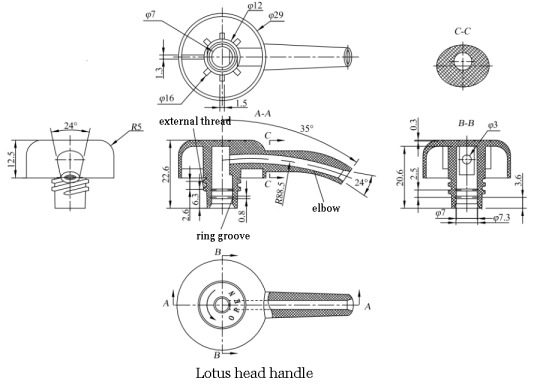
View On WordPress
#cooling system#Demolding process of plastic parts#Design of Injection Mold#gating system#Injection Mold for Shower Head Handle#injection molding production of plastic parts#mechanism design#mold structural parts#Mold structure analysis#mold structure design#Mold working process#molded parts design#molding parts#Molding process analysis#plastic part#structure of plastic parts
0 notes
Text
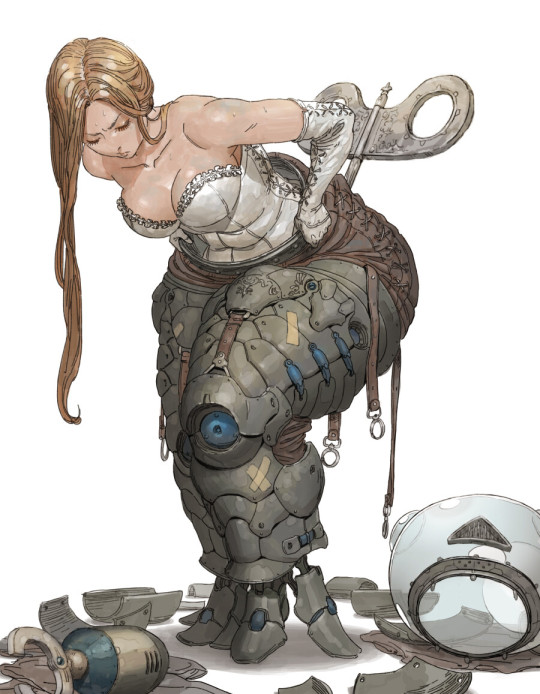
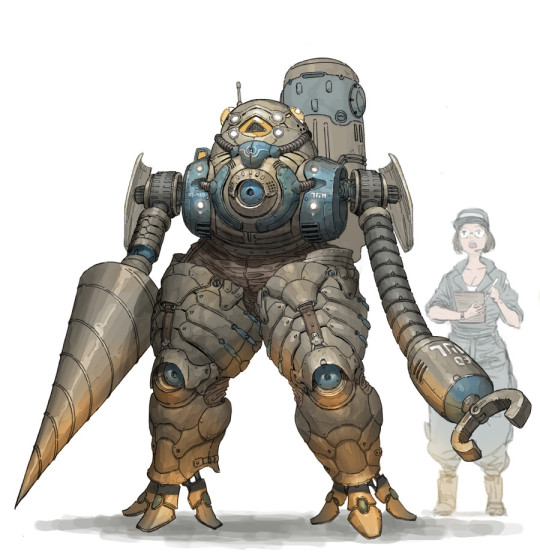
Take off the suit by Kyoung Hwan Kim
847 notes
·
View notes
Text

ive been playing ragnarok again
#so that was a lie i drew law anyway#he'd be that priest who charges you for revives#its me im that priest#trafalgar law#one piece#ragnarok online#i wanted to draw fem kid and killer as mechanic and shadow stalker but 3rd class designs dont slap as hard as 2nd and 2-2s
849 notes
·
View notes
Text

experimenting with a mordred design :D
#imagine that's a sick looking pattern on his cloak#anyways. mordred huh. what a guy.#he's been on my mind for a while so i'm sorry if i start drawing him a bit#high noon over camelot#hnoc#the mechanisms#the mechs#art#digital art#not a final design ofc. however i do imagine him wearing dark clothes so that might stay#the colors feel weird i've been staring at this for far too long
448 notes
·
View notes